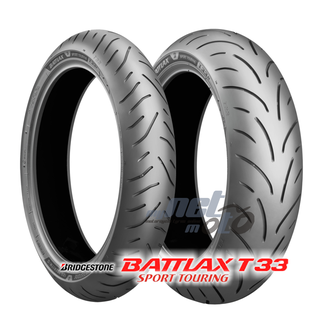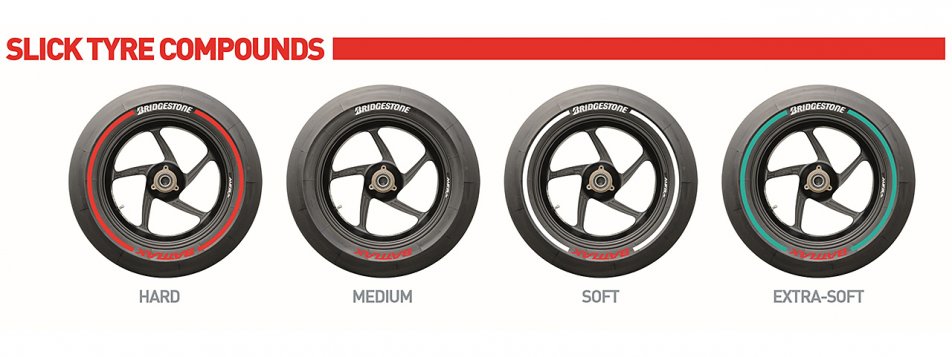Everything about the Essential Motorbike Tire Guide for Ideal Bike Maintenance and Efficiency
The Necessary Motorcycle Tire Overview functions as an important source for bikers seeking to boost their bike's performance and security. motorcycle tyre guide. It supplies insights right into different tyre types and specs that affect handling and sturdiness. Furthermore, understanding proper upkeep techniques can significantly extend tyre life. Several riders forget vital elements that affect their riding experience. Exploring these aspects can lead to educated choices that ultimately boost both safety and security and enjoyment when driving
Recognizing Motorcycle Tyre Types
When choosing motorbike tires, recognizing the numerous types offered is crucial for peak performance and safety and security. Motorcyclists run into various tyre classifications, each created for certain riding problems and styles. Sporting activity tyres highlight grip and responsiveness, making them suitable for high-performance bikes and track usage. Visiting tyres, on the various other hand, concentrate on resilience and convenience, perfect for long-distance experiences. Off-road tyres include aggressive step patterns, supplying grip on uneven surfaces, while dual-sport tyres supply flexibility for motorcyclists that change in between on-road and off-road conditions.Additionally, cruiser tyres are made for stability and a smooth adventure, providing to the distinct needs of cruisers and visiting bikes. Recognizing these classifications allows riders to select tyres that line up with their riding behaviors and ecological problems, eventually boosting both safety and performance. Each kind plays an essential function in making certain a superior riding experience tailored to the private motorcyclist's needs.
Trick Tire Specifications Discussed
Choosing the proper motorcycle tyres entails more than just understanding the different kinds; it likewise needs experience with crucial requirements that influence performance and security. Key specs consist of tire size, which is commonly expressed as a collection of numbers suggesting width, aspect ratio, and edge size. This code is necessary for guaranteeing compatibility with the motorcycle.Another vital spec is the load index, showing the optimum weight a tire can sustain. The speed ranking represents the optimal rate a tyre can securely deal with, critical for performance enthusiasts.Additionally, walk pattern and rubber compound impact hold, stability, and wear characteristics. Tyres with a softer compound tend to provide far better hold yet wear much faster, while harder compounds last much longer yet might sacrifice grip. Recognizing these requirements allows bikers to make informed decisions, improving both their safety and security and riding experience.
How to Pick the Right Tyres for Your Bike
How can a rider warranty they pick the appropriate tyres for their motorcycle? Picking the ideal tires involves recognizing the certain needs based upon riding design, weather condition, and surface problems. Motorcyclists need to first consult the motorbike's handbook to recognize recommended tire sizes and specifications.Next, they should examine the type of riding they intend to do-- whether it's travelling, touring, or off-road. Each group has unique tire styles customized for height performance.Additionally, riders should evaluate tread patterns; deeper treads supply better grip in wet problems, while shallower treads improve security on completely dry surfaces.Lastly, it is vital to examine the tire's construction and material, as these aspects affect durability and handling (motorcycle tyre guide). By examining these elements thoroughly, a rider can with confidence select tyres that improve safety and security, efficiency, and general riding experience
The Significance of Tyre Pressure and Maintenance
Tire stress is a considerable aspect of motorcycle upkeep that directly influences security and performance. Preserving the right tire pressure guarantees suitable call with the road, enhancing hold and security throughout experiences. Under-inflated tires can result in increased rolling resistance, resulting in bad fuel efficiency and undue wear on the tyres. Alternatively, over-inflated tyres might trigger a severe trip and reduce traction, particularly in wet conditions.Regularly monitoring tyre stress, ideally before each experience, is crucial to maintaining the motorcycle's total performance. Motorcyclists need to describe the producer's specs for the advised stress degrees. Furthermore, keeping track of tyre condition and adjusting pressure according to lots and riding conditions is necessary for security. Proper tire maintenance contributes to expanded tire lifespan, better handling, and enhanced stopping performance. Inevitably, constant interest to tyre pressure and upkeep is vital for assuring a risk-free and delightful riding experience.

Recognizing Indicators of Tyre Wear and Damage
Acknowledging indicators of tire wear and damage is vital for preserving motorbike safety and performance. Key signs consist of reviewing walk depth and carrying out a thorough visual inspection for any kind of noticeable damage. Attending to these factors immediately can prevent more issues when driving.
Tread Deepness Evaluation
As bikers take to the roadways, the significance of examining step depth can not be overstated, because worn or damaged tires can substantially impact safety and security and performance. Tread depth straight affects grip, stopping distance, and cornering security. To assess tread deepness, motorcyclists must make use of a tread deepness gauge, measuring the grooves at various factors throughout the tire. A depth of 2mm or much less suggests substantial wear and requires prompt substitute. In addition, bikers can utilize the "dime examination" by putting a coin into the tread; if the top of Lincoln's head is noticeable, the tyre is also put on. Routine checks guarantee peak grasp on diverse road problems, advertising a more secure riding experience while enhancing the general handling of the motorbike.
Visual Damage Examination
Evaluating bike tyres for visual damages is important for keeping safety when driving. Bikers should on a regular basis take a look at tyres for indications of wear such as splits, protrudes, or leaks. Uneven wear patterns might suggest positioning problems or incorrect rising cost of living, leading to compromised efficiency. Furthermore, looking for international items installed in the walk can avoid prospective blowouts. Riders should pay very close attention to the sidewalls, as any type of abrasions or cuts can weaken the tire's framework. Making sure that the tread is devoid of too much wear is essential for excellent grasp. Routine visual evaluations not just boost security yet also prolong the life of the tyres, making certain a smoother and much more trusted riding experience. Prompt discovery of damages can prevent pricey repairs and crashes.
Seasonal Tire Considerations for Different Riding Conditions
When thinking about bike tires, seasonal conditions play a vital duty in efficiency. In wet climate, tires designed for boosted grasp and water displacement website here come to be vital for safety and security. In addition, winter season riding needs specific tire attributes to guarantee peak grip on cold, potentially unwelcoming surfaces.

Wet Climate Performance
Damp climate condition existing one-of-a-kind obstacles for motorcyclists, making the choice of tires important for safety and performance. Tires designed for damp weather condition commonly feature deeper footsteps and specialized rubber compounds that boost hold on slippery surfaces. These tires are crafted to transport water away, lowering the danger of aquaplaning and enhancing security during rainfall. Cyclists must consider tires with a balanced style, offering both grip and toughness in damp conditions. In addition, maintaining appropriate tire pressure is important, as under-inflated tyres can endanger performance. When faced with rain-soaked roads, routine assessments for wear and damages are required to assure peak feature. Choosing ideal wet-weather tires ultimately adds to a more secure and more pleasurable riding experience.
Winter Tire Demands
Riding in wintertime problems positions unique difficulties that demand details tyre demands to guarantee safety and efficiency. Wintertime motorcycle tires are created with much deeper treads and softer rubber compounds, offering enhanced grasp on unsafe and chilly surface areas. This is important for keeping grip on ice, snow, and damp roads. In addition, winter tyres often include an one-of-a-kind walk pattern that helps network water away, minimizing the risk of aquaplaning. Cyclists should likewise take into consideration the tyre's temperature level resilience, as efficiency can diminish in extreme cold. It is essential to routinely check tyre stress, as it can go down substantially in lower temperatures. By selecting the ideal wintertime tires, riders can navigate extreme problems with greater confidence and stability, guaranteeing a much safer riding experience.
Tips for Correct Tyre Storage and Longevity
Correct tire storage is important for maintaining their long life and efficiency in time, as ignoring this element can bring about premature degeneration. To ensure ideal storage space, it is vital to keep tyres in a great, dry setting far from direct sunlight and resources of heat, such as radiators or heating systems. Too much warmth can cause rubber substances to damage down, jeopardizing the tire's integrity.Additionally, tyres ought to be kept upright or piled horizontally, relying on their kind. It is advisable to rotate them regularly to prevent level spots if piled. Correct inflation is additionally important; tires need to be pumped up to the supplier's recommended pressure to avoid deformation.Lastly, it is valuable to cover tyres with a protective product to shield them from dust and pollutants. Following these tips will certainly help extend the life of motorcycle tyres, guaranteeing they continue to be efficient and secure for usage when the riding season resumes.
Often Asked Inquiries
How Frequently Should I Replace My Motorcycle Tyres?

Can I Mix Different Tire Brands on My Motorcycle?
Mixing various tyre brand names on a bike is typically not advised. Variants in walk patterns, rubber substances, and efficiency qualities can result in unpredictable handling and endangered safety, potentially enhancing the risk of mishaps.
What Is the Life-span of a Motorcycle Tire?
The life-span of a motorbike tyre typically varies from 5,000 to 15,000 miles, affected by variables such as riding style, surface, and tyre maintenance. Normal inspections can help ensure peak performance and safety throughout their usage.
Exactly how Do I Dispose of Old Bike Tyres?
When disposing of old bike tyres, they should be taken to designated recycling. Many regional waste administration services additionally provide tyre disposal programs, ensuring eco-friendly handling and compliance with local policies concerning tire waste.
Exist Any Tyre Warranties Offered for Motorcycles?
Several bike tire manufacturers use guarantees that cover issues in material and handiwork. The specifics vary by brand and design, so it's essential for bikers to assess individual guarantee terms before acquiring new tires. Off-road tyres feature aggressive tread patterns, offering traction on uneven surface areas, while dual-sport tyres supply flexibility for riders official website who shift in between on-road and off-road conditions.Additionally, cruiser tyres are developed for stability and a smooth adventure, providing to the special requirements of cruisers and exploring bikes. Each classification has distinctive tyre styles tailored for height performance.Additionally, motorcyclists must analyze walk patterns; much deeper treads provide better grip in damp problems, while shallower treads improve stability on completely dry surfaces.Lastly, it is important to analyze the tyre's building and product, as these elements influence resilience and handling. Appropriate tyre upkeep adds to prolonged tyre life expectancy, better handling, and enhanced stopping efficiency. Appropriate inflation is additionally crucial; tires ought to be blown up to the producer's advised pressure to avoid deformation.Lastly, it is advantageous to cover tyres with a protective material to secure them from dirt and pollutants. The life expectancy of a motorbike tire generally ranges from 5,000 to 15,000 miles, influenced by variables such as riding surface, tyre, and design upkeep.